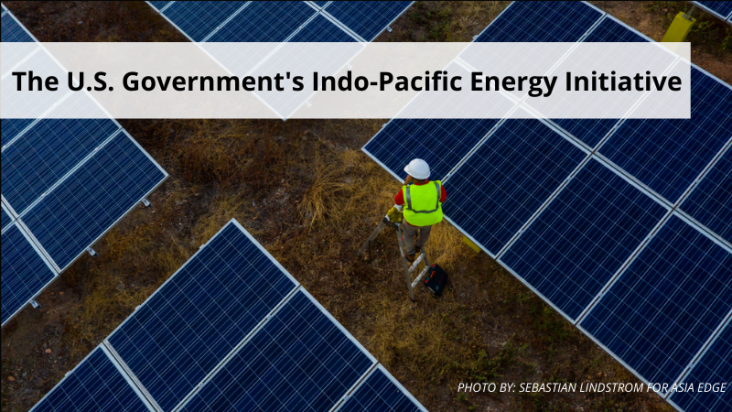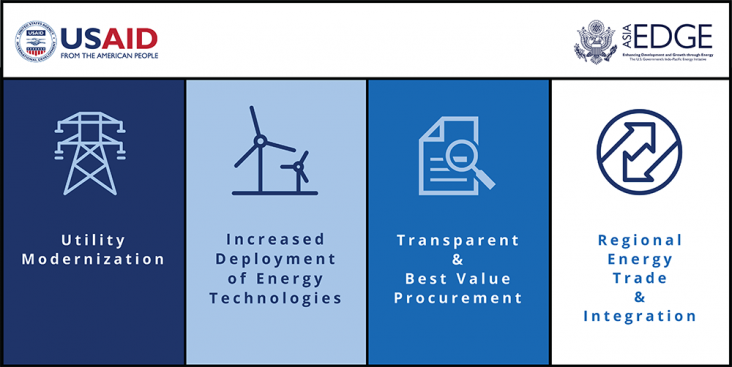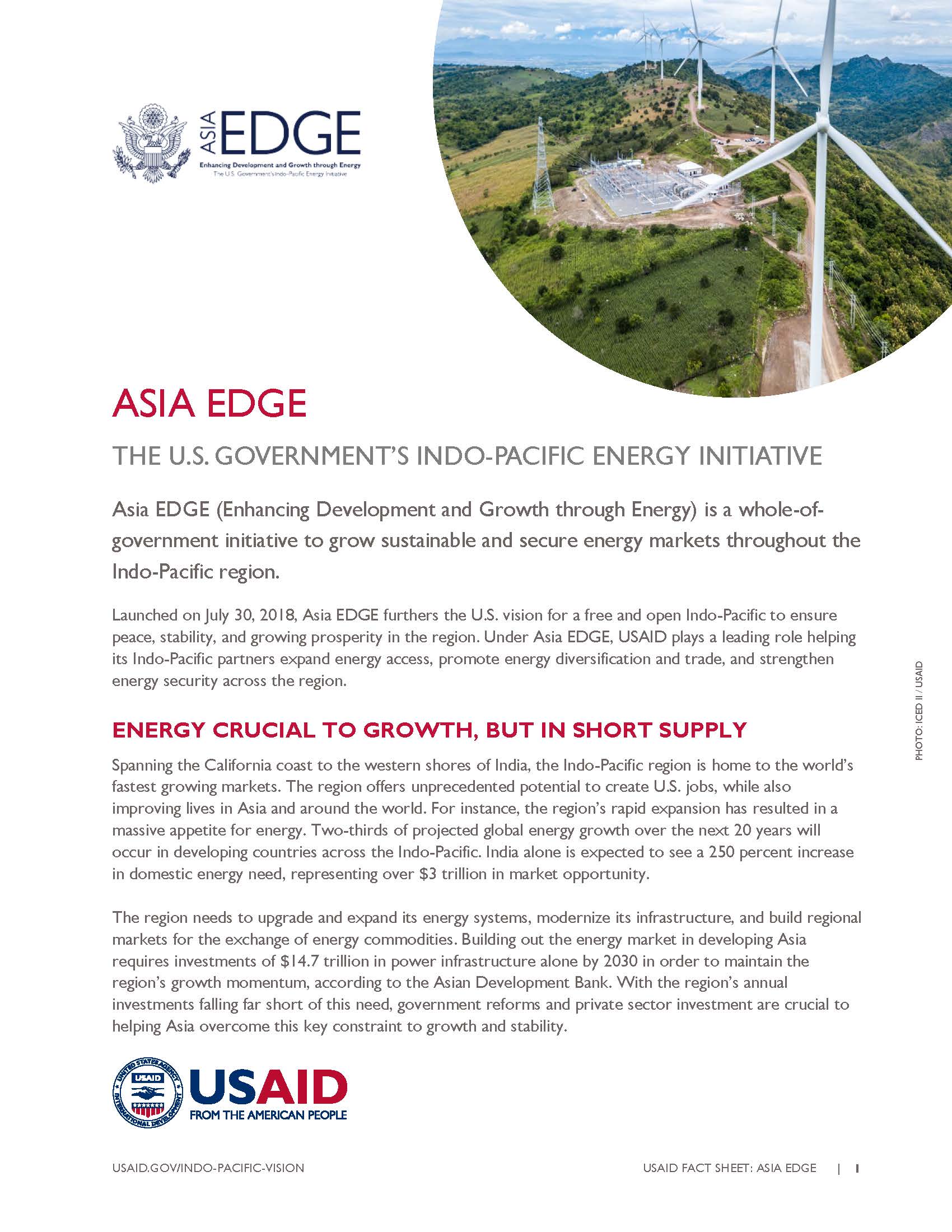- Where We Work
- Africa
- Asia
- Europe and Eurasia
- Latin America and the Caribbean
- Middle East
- Mission Directory
Speeches Shim

Launched on July 30, 2018, Asia EDGE (Enhancing Development and Growth through Energy) furthers the U.S. vision for a free and open Indo-Pacific to ensure peace, stability, and growing prosperity in the region. Under Asia EDGE, USAID plays a leading role helping its Indo-Pacific partners expand energy access, promote energy diversification and trade, and strengthen energy security across the region.
Asia EDGE Fact Sheet ![]() (pdf - 373k)
(pdf - 373k)
The Indo-Pacific region is home to the world’s fastest growing markets and offers unprecedented potential to strengthen the U.S. economy while also improving lives in Asia and around the world. For instance, the region’s rapid expansion has resulted in a massive appetite for energy. Two-thirds of projected global energy growth over the next 20 years will occur in developing countries across the Indo-Pacific. India alone is expected to see a 250 percent increase in domestic energy need, representing over $3 trillion in market opportunity.
The region needs to upgrade and expand its energy systems, modernize its infrastructure, and build regional markets for the exchange of energy commodities. Building out the energy market in developing Asia requires investments of $14.7 trillion in power infrastructure alone by 2030 in order to maintain the region’s growth momentum, according to the Asian Development Bank. With the region’s annual investments falling far short of this need, government reforms and private sector investment are crucial to helping Asia overcome this key constraint to growth and stability.
USAID is leveraging its technical expertise, enduring regional presence, and convening power to help the Indo-Pacific region overcome its energy constraints. Our efforts promote utility modernization through digitization and performance enhancement, foster regional energy connectivity, attract increased levels of private sector investment, and accelerate the adoption of regional and bilateral competitive energy markets.
Asia EDGE support focuses in four primary areas:

- Utility Modernization: USAID helps advance the financial viability and efficiency of local power utilities through the modernization and expansion of transmission and distribution systems. USAID is also fostering the adoption of cybersecurity measures and sector and regulatory reforms, such as tariff restructuring.
- Increased Deployment of Energy Technologies: USAID support to the electricity and gas sectors prioritizes least-cost, long-term planning and efficient integration of transformative technologies, including battery storage, smart grids, electric vehicles, modern gas systems, and energy efficient products and practices.
- Transparent, Best Value Procurement: USAID promotes transparent, competitive energy procurement practices, including auctions, quality standards, and the legal and regulatory frameworks that enable a wide range of private sector participation in the energy sector.
- Regional Energy Trade and Integration: USAID helps develop legal and regulatory frameworks that enable power and gas trade and the development of power markets, including regional power exchanges. This effort will build on and leverage bilateral initiatives, including electricity market expansion, that strengthen and prepare individual countries for regional coordination and integration. It will also focus on expanding the downstream regional market for natural gas and LNG imports.
USAID plays a leading role in Asia EDGE. Our achievements include:
- In December 2018, following USAID support, India revised its guidelines on cross-border power trade, enabling other countries to use India’s transmission lines as a pass-through for their electricity exchanges. This is increasing power trade in the region. For example, in June 2019, the Government of Bangladesh signed an agreement with a private power producer in Nepal to import hydropower using Indian power lines. This has led to the Government of Bangladesh now investing in hydropower development projects in Nepal and Bhutan to further diversify its energy sources and increase energy security.
- In Indonesia, our support for the integration of variable renewable energy into Indonesian power grids has paved the way for the development of Indonesia’s first two utility-scale wind farms—by Colorado-based UPC Renewables, and Vena Energy, a subsidiary of the New York-based equity fund, Global Infrastructure Partners. Since 2015, USAID has mobilized $1.6 billion of public and private investment in renewable energy bringing clean electricity to more than 560,000 homes.
- Between 2015 and 2019, USAID supported the Government of Nepal in mobilizing more than $1.6 billion for new energy projects that, once completed, will result in a more than doubling of Nepal’s current energy generation capacity.
- In May 2019, the Ha Do Group, one of USAID’s partners, completed construction of its first solar power farm in Vietnam using services and advanced technology from SunPower, a U.S. leader in solar energy.


Comment
Make a general inquiry or suggest an improvement.